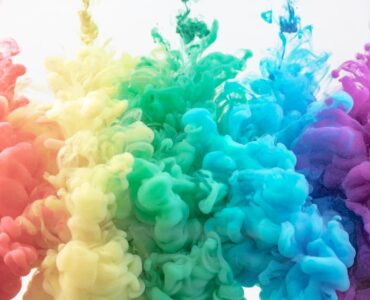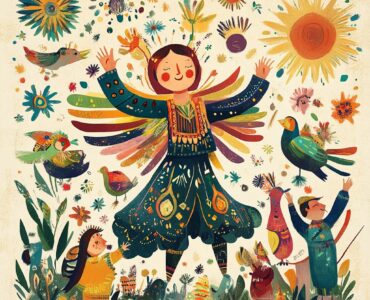The world of illustration is constantly evolving, and as the digital era progresses, we’re witnessing more innovation and unique styles emerging. As with any art form, illustration reflects cultural shifts, technological advancements, and the personal touch of artists. Let’s delve into the main trends shaping contemporary illustration.
Bold Colors and Gradients
In recent years, there has been a clear shift towards the use of vibrant, bold colors. This trend is partly influenced by advancements in display technologies that can showcase a broader spectrum of colors. Whether it’s a website design or a magazine cover, bright and contrasting color palettes are everywhere. Gradients, too, have made a significant comeback. They’re no longer the simple background transitions we remembered from the early days of the web. Modern gradients are complex, often combining multiple hues in creative ways, adding depth and dynamism to flat illustrations.
Abstract and Geometric Forms
Abstract illustrations have gained traction due to their ability to convey complex ideas simply. They are not tied to the constraints of realism, allowing for more creative freedom and interpretation. Abstract forms can represent feelings, concepts, or even brands in ways that resonate with audiences on an emotional level. Hand in hand with abstraction, geometric shapes have become a staple in many illustrators’ toolkits. Clean lines, circles, triangles, and other geometric forms can create both minimalistic and intricate designs. These shapes provide structure and can be easily integrated with other styles.
Textured and Hand-drawn Elements
There’s an increasing desire for authenticity in the digital world. This has led illustrators to incorporate hand-drawn elements and textures into their digital works. The combination of the digital and hand-made gives designs a unique feel, bridging the gap between traditional and contemporary. Textures, in particular, can add depth and a tactile feel to illustrations. Whether it’s the grainy touch of a pencil or the roughness of a brush stroke, these elements evoke a sense of nostalgia and authenticity.

Inclusive and Diverse Representations
Illustration has always been a medium to reflect society, and in today’s globalized world, inclusivity is more crucial than ever. Contemporary illustrators are conscious of representing diverse characters, backgrounds, and stories in their works. This includes illustrations that showcase different races, genders, body types, and cultures, reflecting the world’s diverse tapestry.
Surrealism and Dream-like Scenarios
With the world often seeming like a tumultuous place, many illustrators are turning to escapism, creating dream-like, surreal illustrations. These works often combine ordinary elements in unexpected ways, challenging perceptions and sparking curiosity. Surreal illustrations provide an avenue for both artists and viewers to escape reality, if only for a moment, and delve into worlds where imagination reigns supreme.
Digital and Traditional Fusion
In the quest for uniqueness and originality, many illustrators are blending digital techniques with traditional methods. This fusion brings together the best of both worlds, combining the precision and flexibility of digital tools with the charm and warmth of traditional mediums. For instance, an artist might sketch a design by hand, scan it into a computer, and then use graphic software to enhance or manipulate the drawing. This trend is particularly noticeable in book illustrations and editorial art. By merging digital and traditional approaches, artists can produce a hybrid that offers a fresh, yet familiar aesthetic.
Motion in Illustration
With the rise of digital platforms and technologies, static illustrations are evolving into dynamic artworks. Animated illustrations or “motion graphics” are becoming increasingly popular, especially in online advertising, app interfaces, and website designs. These animations range from simple movements, like a character’s blinking eye or flowing water, to more complex sequences that tell a story. This trend not only makes the artwork more engaging but also helps in better storytelling, ensuring that the message is communicated more effectively. As platforms like Instagram and Pinterest continue to support and promote video content, the blend of motion in illustration is a trend that’s expected to grow even more prominent. With these additions, the landscape of contemporary illustration showcases the versatility and adaptability of artists. As they navigate the challenges and opportunities presented by technology and societal shifts, the resulting artworks continue to inspire, resonate, and captivate audiences worldwide.
Conclusion
The world of modern illustration is as diverse as it is dynamic. As artists continue to push boundaries, experiment with new tools, and reflect the changing world around them, we’re sure to see even more exciting trends emerge. Whether you’re an illustrator looking for inspiration or simply an admirer of the art, staying abreast of these trends offers a fresh perspective on how art evolves in the digital age.



